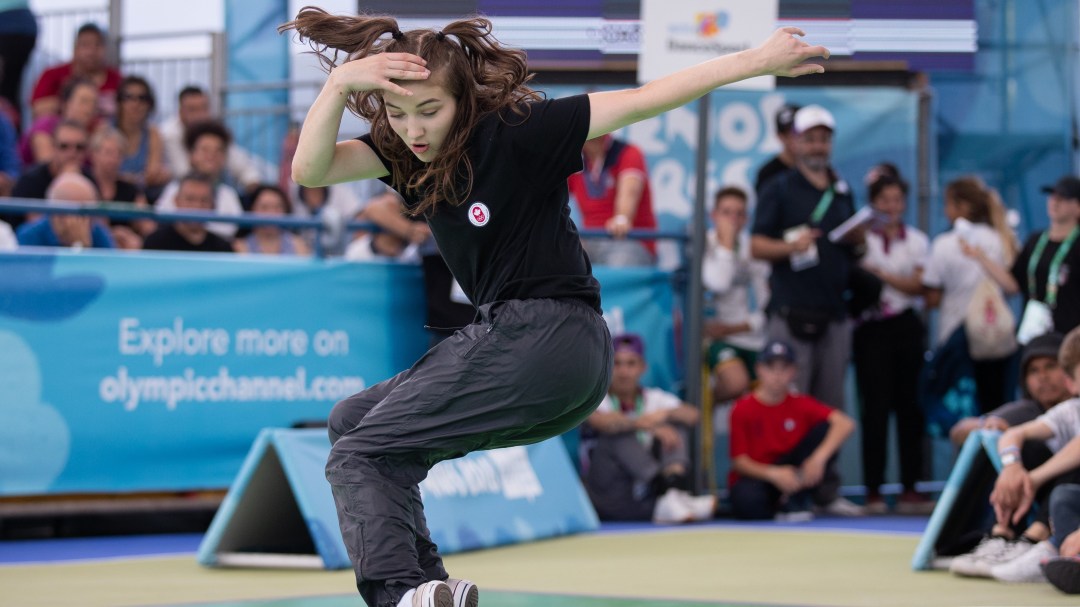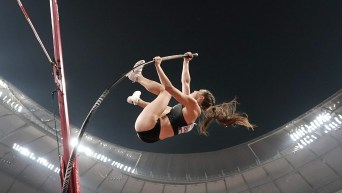Breaking
Sport Overview
Breaking at Paris 2024
Venue: La Concorde 1
Competition Dates: August 9-10 (Days 14-15)
Events: 2 (1 men, 1 women)
Breaking is being included on the Olympic program for the first time at Paris 2024. There will be two events: B-Boys and B-Girls.
Each event is comprised of head-to-head battles, with each breaker’s set lasting a maximum of 60 seconds. Competitions usually begin with a round robin phase, followed by a single elimination knockout phase. After progressing through this bracket, the semifinal winners battle for gold and silver while the semifinal loses battle for bronze.
The dance floor has a minimum size of six metres by six metres. In major international competitions, there are a minimum of nine judges.
The judges have five categories of focus, all of which are given equal weight in the final score: technique, vocabulary, execution, musicality, and originality.
To allow the judges to give their complete attention to the battle in front of them, a Trivium Judging System was created. The tablet has five sliders, one for each of the categories of focus. The judges will shift those sliders as a battle progresses, allowing for a gradual arrival at the final decision in the comparison of two breakers. It is not about breakers accumulating points, but rather shifting the “balance of power” as a battle goes on.
There are three main elements in breaking sets: toprock, downrock, and freezes.
Toprock moves are performed while standing up and are typically how solo performances start as the breaker prepares to go down to the floor. Presented with a forceful attitude, in a club setting this is how breakers draw attention to themselves to open the space necessary to perform their floor moves.
Downrock moves are all performed on the floor. This can include moves in which the breaker touches the floor with their hands, but also when the breaker is on their back or stomach. Sub-categories include drops (the transition from toprock to a floor move), footwork/legwork (the steps, swings, kicks and sweeps done on the ground), spins (a minimum of a 360-degree turn on the ground), power moves (always with a spinning motion combining a set of movements), blow ups (quick, explosive combinations that lead to a surprise moment), and air moves (no part of the body is touching the ground).
Freezes come when a breaker stops moving completely in the middle of their set, usually requiring great balance and strength or flexibility.
Breaking Competition History
Breaking is an urban dance style that traces its origins to the Bronx in New York City during the mid-1970s. Over the decades, it has evolved into a global art form that requires great athleticism. In its early days, there was not a structured competitive aspect. But this began to change, starting with the International Battle of the Year in 1990 that saw breaking crews from around the world face off for judges in a showcase.
Throughout the 1990s other judged international events came into being. That created fresh interest in breaking, which had once been seen as a fad whose time had come and gone. This new generation of breakers grew up participating in organized competitions hosted primarily in North America, Europe, and Asia.
In 2016, the International Olympic Committee decided to include breaking on the program for the 2018 Summer Youth Olympic Games in Buenos Aires. Canada’s Emma won the silver medal in the B-Girls event. Breaking was added to the Olympic program for Paris 2024 as a sport proposed by the organizing committee.







